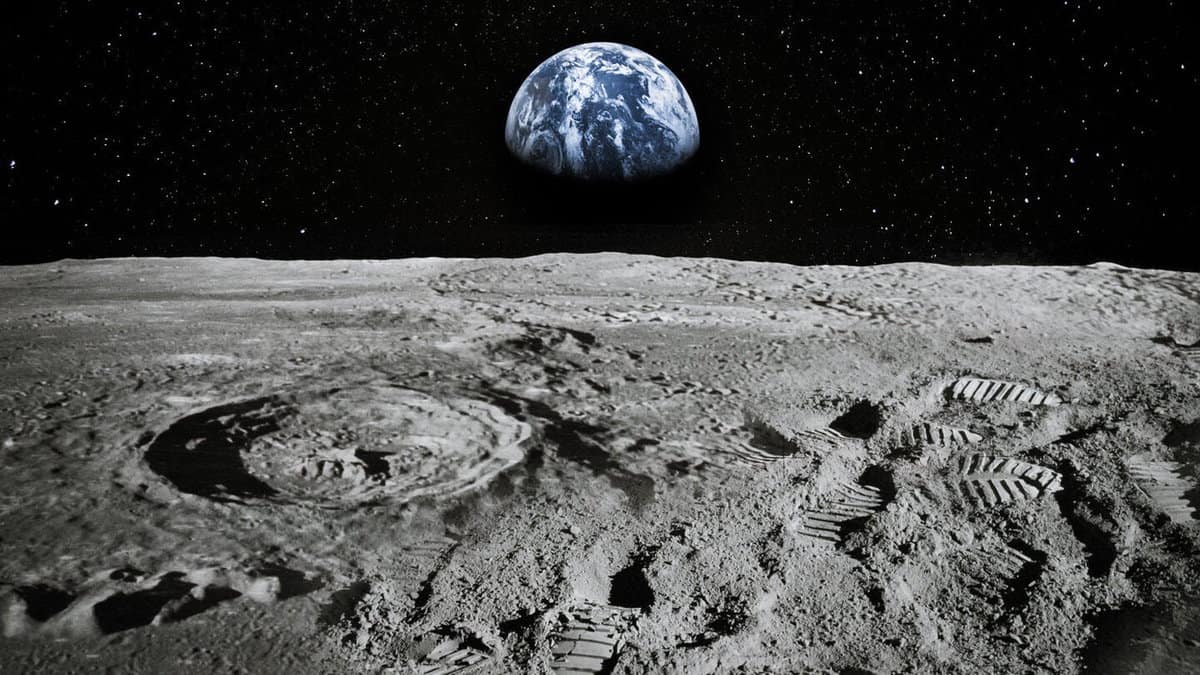Despite its close proximity to Earth, the moon has a completely distinct appearance from our planet. Its surface is markedly dissimilar to that of Earth.
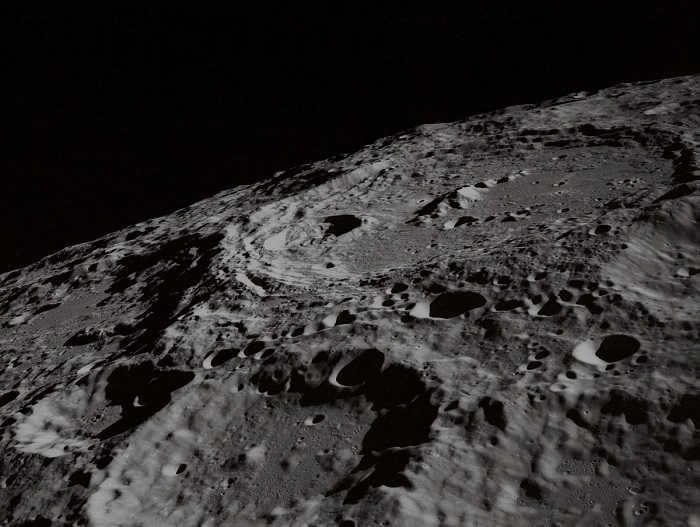

What is the composition and surface of the Moon?
The Moon is similar in structure to Earth and is composed of several layers:
- An inner core made up of molten iron compounds;
- An outer core with a slightly different chemical composition, also mostly made of iron;
- A partially molten layer at the boundary between the outer core and the mantle, formed around 4.5 billion years ago from the crystallization of the global intra-lunar magma ocean;
- The mantle, which consists of three layers: upper, middle, and lower;
- The crust.
The average thickness of the lunar crust is about 50 km. However, it is 12-18 km thinner on the side facing the Earth compared to the opposite side. In certain regions of the moon, there is no crust, which exposes outcrops of the upper mantle on the surface.
Lunar Soil
The lunar soil, also known as regolith, is formed by the impact of extraterrestrial objects on the moon over billions of years. These objects, such as asteroids and fragments of comets, crumble into fine dust that eventually covers the entire lunar surface. The soil is composed of microscopic particles that are speckled in appearance. One notable difference between lunar soil and terrestrial rocks is the complete absence of bound water.
The chemical composition and color of the regolith vary across different parts of the moon. For instance, the soil in lunar seas contains high levels of iron and magnesium, whereas the soil on the continents is rich in silicon dioxide and aluminum.
Seas and Landmasses
With just our eyes, we can differentiate between two distinct features on the Moon’s surface:
- Seas, which are darker and have a smooth texture.
- Continents, which are lighter in color and consist of uplands and mountains.
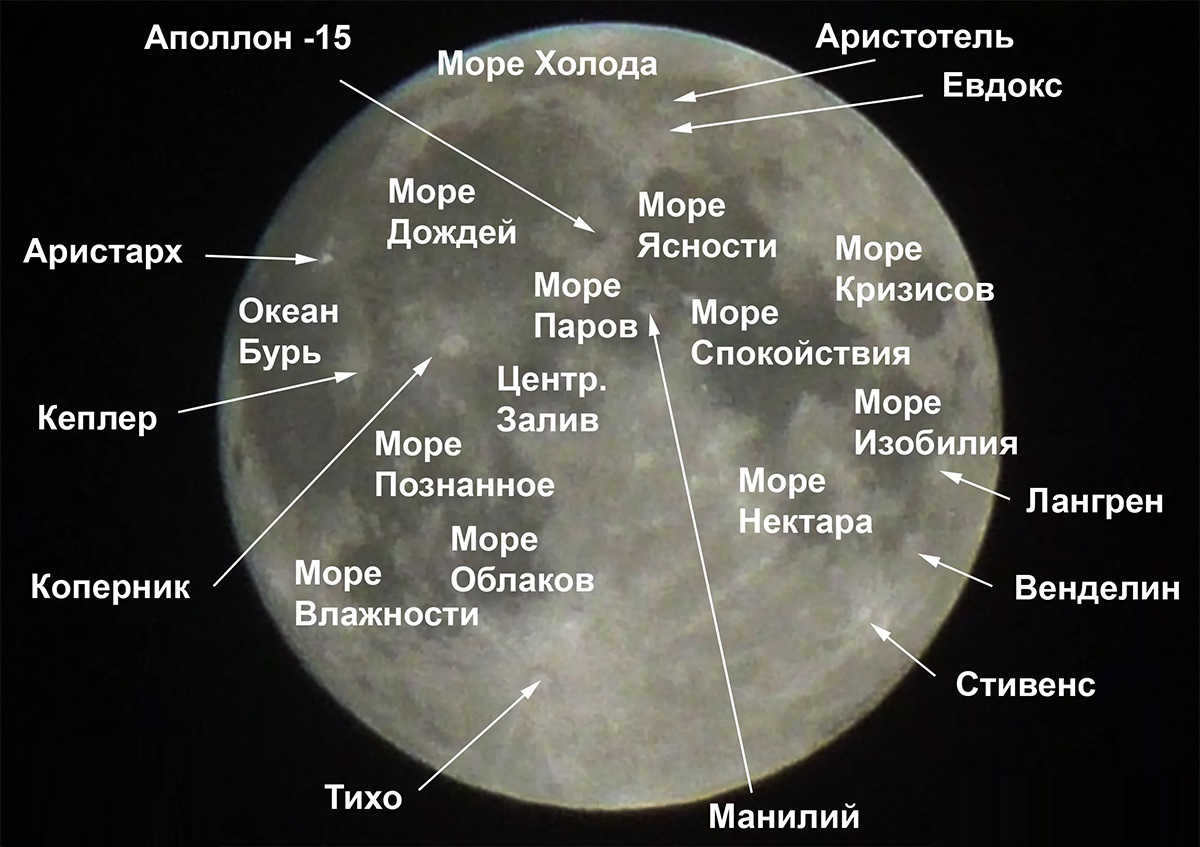
Approximately one third of the visible side of the Moon is covered by lunar seas, which make up about 16% of the Moon’s surface. These features are unrelated to Earth’s seas and are named after a Latin word. They are the result of ancient volcanic activity, where basaltic lava flows created these formations. The average altitude of the seas is 2.5 km lower than the surrounding continents. These geological formations are younger than the continents.
The largest lunar sea is called the Ocean of Storms, spanning 2400×2000 km. It is the only ocean found on the Moon. Additionally, there have been identified:
- 20 seas – significant features of the lunar landscape;
- There are 18 lakes – small formations of marine type, but relatively isolated from the seas;
- There are 3 marshes – low-lying areas less dark than the seas.
Out of the total number of such formations, 7 seas, 1 marsh, and 2 bays have recently been excluded by agreement with astronomical organizations. The main reasons for exclusion include the determination that the site is not a stand-alone but is part of a larger “body of water,” and other situations such as:
- The Sea of Desire was discovered in images taken in 1959 by the Luna 3 station. However, upon examination of later and clearer photos, it became evident that this lowland was not a single lowland, but consisted of several craters and 1 flat area, which later became known as the Sea of Dreams.
- The Sea of New was first identified in 1913, but after extensive research in the mid-1960s, it was officially designated as part of the Joliot crater.
- The Struve Sea was initially discovered in 1935, but due to its small size, it was later renamed Lake Hope in 1976.
- Originally thought to be a sea, the Southwest Sea was eventually identified as a crater and was subsequently recognized as the South Pole-Aitken Basin.
- The Mists Swamp, initially included on the list of lunar objects, was later removed as it was determined to be a crater. Its size and distinctive features did not warrant a separate designation.
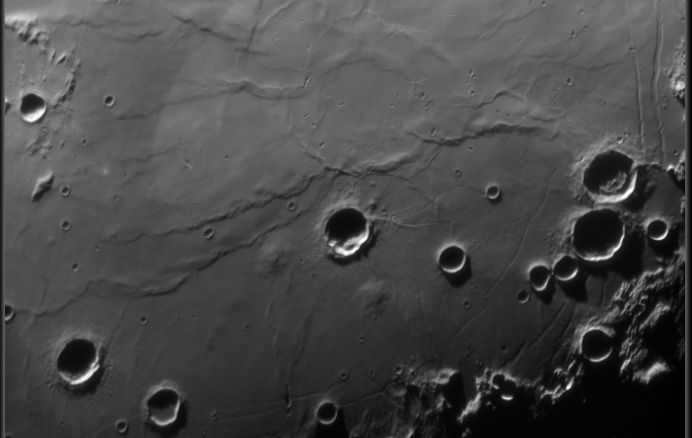
There are many vents of former volcanoes, which are formed by lava outbursts, observed on the seas. These vents, known as domes, have gentle slopes and typically have a diameter of 8-12 km.
The lighter mountainous zones of the Moon are represented by the continents. The mountain ranges on these continents are predominantly found along the “coasts”.
Mascons
Mascons refer to the remnants of asteroids that have descended onto the surface of the Moon, where they have been pounded into the solid lunar ground and have come to rest, rising above the surrounding landscape. These formations possess a higher density than the Moon itself, and as a result, they serve as sources of gravitational disruptions.
Craters and cirques
The Moon lacks an atmosphere, allowing meteorites and asteroids to freely collide with its surface. Unlike on Earth, where foreign space objects often burn up in the atmosphere, these objects impact the Moon’s surface at full speed. As a result, the lunar landscape is extensively marked by craters, with tens of thousands scattered across its surface.
Lunar impact craters can take on the appearance of small hollows or massive cliffs. The largest nearby crater spans 2.5 thousand kilometers in diameter and plunges to a depth of 13 kilometers. It goes by the name of Aitken and is situated on the southern hemisphere of the Moon’s far side, although its rim can be observed from Earth.
Many younger formations can be found atop the surface of older ones, which enables scientists to determine the age of the craters and the celestial body itself.
Cirques are circular mountains that bear a resemblance to craters, except they possess a level bottom and lack a central slide in their structure. The majority of them are of impact origin, resulting from the collision of a large meteorite, comet, asteroid, or other celestial body with the Moon.
Diagram of the lunar surface
Until recently, only maps of the visible portion of the Moon were available. However, with the advancement of spacecraft technology, scientists have been able to explore the far side of the Moon as well. Today, we have detailed diagrams of both the near and far hemispheres of our planet’s natural satellite.
In order to gain a comprehensive understanding of this celestial object, several key features must be taken into consideration, including the Moon’s volume, diameter, surface area, and mass.
The Moon follows an elliptical orbit with an approximate speed of 1.02 km/sec. If one were to observe the Moon from the North Pole of Earth, they would notice that it moves in the same direction as most other visible celestial bodies, namely counterclockwise. Additionally, the gravitational force on the Moon is measured to be 1.622 m/s².
For a long time, scientists and astronomers have been intrigued by various metrics such as the satellite’s distance from Earth, its impact on climate, the Moon’s mass, and other characteristics. The study of celestial bodies actually dates back many years.
Exploring the Moon in ancient times
The Moon, being an incredibly luminous celestial object, naturally captivated the curiosity of ancient scientists. Thousands of years ago, astronomers were fascinated by the Moon’s mass and the ever-changing phases it went through.
It is common knowledge that numerous individuals even revered this celestial entity. The astronomers of Ancient Babylon achieved remarkable precision in calculating the variation of lunar phases. Scientists in the twentieth century, equipped with state-of-the-art instruments, only adjusted this figure by a mere 0.4 seconds. However, during that era, the masses of the Moon and Earth were still unknown.
The moon has been extensively studied and is considered the most researched celestial body. Numerous satellites, approximately one hundred, have been launched by scientists from various countries to conduct research on the moon. The initial exploration vehicle, Luna-1, was sent to the moon by the Soviet Union in 1959, marking a significant milestone in lunar research. This pioneering mission allowed for the collection of lunar soil samples, the transmission of photographs back to Earth, and an estimation of the moon’s mass. The Soviet Union also successfully deployed two lunar rovers, with one of them operating for nearly 10 months and covering a distance of 10 km, while the second rover functioned for 4 months and traveled 37 km.
Main Moon Statistics
The Moon has a diameter of 3474 km, which is significantly smaller than the Earth’s diameter of 12742 km. This means that the Moon’s circumference is only about 3/11th of the Earth’s.
The Moon’s surface area is 37.9 million square kilometers, much smaller than the Earth’s surface area of 510 million square kilometers. Even if we compare the Moon’s surface area to just the Earth’s continents, it is still 4 times smaller. The Earth’s volume is also 50 times greater than the Moon’s volume.
A closer look at the Moon’s mass
The mass of the Moon has been accurately determined through the use of artificial satellites. It is approximately 7.35*10^22 kilograms. In comparison, the Earth has a mass of about 5.9742 × 10^24 kilograms.
The masses of both the Moon and Earth undergo slight changes over time. For instance, the Earth is occasionally bombarded by small meteorites, with around 5-6 tons falling onto its surface each day. Additionally, the Earth loses some mass through the vaporization of helium and hydrogen from its atmosphere into outer space, amounting to approximately 200-300 tons per day. On the other hand, the Moon does not experience such losses. The average density of matter on the Moon is approximately 3.34 grams per cubic centimeter.
The gravitational acceleration on the Moon is six times higher compared to that on Earth. The density of the Moon’s rocks is approximately 60 times lower than that of Earth. Consequently, the Moon’s mass is 81 times smaller than Earth’s mass.
Due to its minimal gravity, the Moon lacks a substantial atmosphere, which means it lacks both a gaseous envelope and free water. The Moon’s orbital period around Earth is known as the sideric or sidereal period, which lasts for approximately 27.32166 days. However, this value experiences slight fluctuations over time.
Lunar Phases
The moon does not emit its own light. An observer can only see the portions of the moon that are illuminated by the sun’s rays reflecting off the Earth’s surface. The changes in the moon’s appearance, known as lunar phases, can be explained by this phenomenon. As the moon orbits around the Earth, it occasionally passes between the sun and the Earth. During this time, the moon’s unlit side is facing the Earth, resulting in a new moon. Within 1-3 days after the new moon, a small crescent shape becomes visible in the western part of the sky, representing the illuminated portion of the moon. About a week later, the moon reaches its second quarter, where exactly half of the moon is illuminated.
The Moon’s diameter is relatively small compared to other cosmic bodies, measuring 3474.1 km. To put it into perspective, this is roughly half the distance between Moscow and Vladivostok.
Despite its modest size, the Moon holds the fifth position among the natural satellites of planets in our solar system:
When considering the ratio of satellite size to its planet, the Moon stands unrivaled. With a diameter one-fourth that of Earth, it takes the top spot. Furthermore, it is even larger than Pluto.
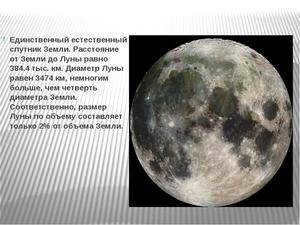
What is the Earth-Moon distance?
The Earth-Moon distance is not a fixed value. On average, the centers of the Earth and its natural satellite are separated by a distance of 384,400 kilometers. This space is large enough to accommodate approximately 30 Earths, and it takes light 1.28 seconds to traverse this distance.
Imagine a scenario where it was possible to travel to the nearest celestial body by car at a speed of 95 kilometers per hour. If we take into account that the entire distance is approximately equal to 10 times the circumference of the Earth, the duration of the journey would be equivalent to completing 10 full circles around the planet along the equator. This means it would take just under six months to reach our destination. Currently, the fastest recorded journey to the Moon was accomplished by the interplanetary station New Horizons, which, while en route to Pluto, crossed the Moon’s orbit a mere eight and a half hours after launch.
The Moon does not follow a perfectly circular orbit, but instead moves in an elliptical path with the Earth situated within it. At different points along its orbit, the Moon is either closer or farther from the planet. This means that as it revolves around a common center of mass with the Earth, the Moon is either approaching or moving away. The point in the Moon’s orbit where it is closest to the Earth is known as the perigee, while the point where it is farthest from the planet is called the apogee. The minimum distance between the two celestial bodies is 356,400 km, while the maximum distance is 406,700 km. Therefore, the distance between the Moon and the Earth can vary from 28 to 32 times the diameter of the Earth.
How to visually estimate the size of the Moon and the distance between the Earth and Moon
The Moon’s diameter is approximately one-fourth of the Earth’s diameter and its volume is 64 times smaller. The distance between the Earth and Moon is roughly equivalent to 30 times the Earth’s diameter. To visually estimate this distance and compare their sizes, you can use a basketball and a tennis ball. Here are the ratios of their diameters:
- The Earth (12,742 km) and the Moon (3,474.1 km) have a ratio of 3.7:1 ;
- A standard basketball (24 cm) and a tennis ball (6.7 cm) have a ratio of 3.6:1.
The values are quite similar. Therefore, if the Earth were the size of a basketball, the Moon would be the size of a tennis ball.
You can prompt individuals to imagine that the Earth resembles a basketball and the Moon is comparable to a tennis ball, and illustrate the vastness of the distance between the two celestial bodies using this scale. Most individuals would probably estimate a distance of around 30 centimeters to a few steps.
However, to accurately represent the actual distance, one would need to take a step back of more than seven meters. Consequently, the average distance between a planet and its satellite is approximately 384,400 kilometers, which is equivalent to about 30 Earths or 30 basketballs. If we multiply the diameter of a sports projectile by 30, we arrive at a measurement of 7.2 meters. This distance is roughly equivalent to 9 strides for a male or 11 strides for a female.
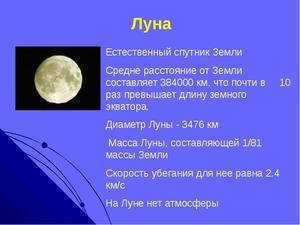
The observable size of the Moon from Earth
amounts to 360 degrees of angle. – the entire circumference of the celestial sphere. Therefore, the lunar body takes up approximately half of one degree (31 minutes on average) on it – this is the angular (observable) diameter. To put it in perspective: the width of the fingernail on the index finger at arm’s length is approximately one degree, which is equivalent to two Moons.
It is a remarkable coincidence that the apparent sizes of the Sun and the Moon are nearly identical for Earth’s inhabitants. This phenomenon is made possible by the fact that the closest star is 400 times larger in diameter than its counterpart. Additionally, this star is also positioned 400 times farther away. This fortuitous alignment allows only Earth among all the planets in our solar system to experience a total solar eclipse.
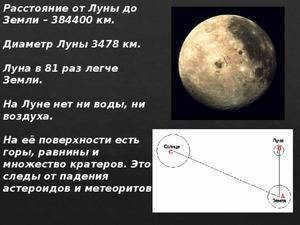
Does the Moon’s size change?
While the actual diameter of the moon remains constant, its perceived size can vary. For instance, during sunrise and sunset, the Moon appears larger to the naked eye. When the lunar orb is close to the horizon, its distance from the observer doesn’t decrease, but actually slightly increases (by the radius of the Earth). This visual effect may seem counterintuitive, but it’s not caused by the Earth’s atmosphere. The exact reason behind this illusion is still unknown, but it can be attributed to the intricacies of our human brain.
Thanks to accurate measurements, scientists have been able to observe a gradual and consistent expansion in the gap between the Earth and its companion, the Moon. The pace at which the Moon is receding – 3.8 centimeters annually – is too gradual to perceive a substantial reduction in the apparent size of the celestial body. In fact, human fingernails grow at a comparable rate. However, in approximately 600 million years, the Moon will have drifted so far away from Earth that it will appear significantly smaller to observers, resulting in the complete absence of total solar eclipses.
It should be pointed out that the moon, which is the Earth’s satellite, was originally 10-20 times closer, according to the current theory that it formed from the collision of a large object with the planet 4.5 billion years ago. However, at that time, there were no observers to appreciate the sight of a moon that was 10-20 times larger in diameter than it is today, shining brightly in the sky.
Mass, density, and gravity
- The Moon has a mass of 7.35 x 10 22 kg, which is only 1.2% of the Earth’s mass. In other words, the Earth is 81 times more massive than the Moon.
- The density of the Moon is 3.34 g/cm 3, which is 60% of the Earth’s density. However, Saturn’s moon Io has a higher density of 3.53 g/cm 3, making it the densest moon in the solar system.
- The gravitational force on the Moon is only 17% of the Earth’s, meaning that objects on the Moon weigh only 17% of their weight on Earth. For example, a 100 kg object on Earth would weigh only 7.6 kg on the Moon. This is why astronauts can jump so high on the lunar surface.
The incredible super moon
Instead of following a perfect circular path around the Earth, the moon actually traces out an elliptical orbit. As a result, there are times when the moon is much closer to our planet. This point of closest approach is known as perigee. When perigee aligns with a full moon, we are treated to the spectacular sight of a super moon, which appears 14% larger and shines 30% brighter than a typical moon. This awe-inspiring phenomenon occurs approximately every 414 days, giving us a rare opportunity to witness the moon in all its glory.
The Illusion of the Horizon
There exists a visual phenomenon that creates the perception of an unusually large Moon. This occurs when the Moon rises behind objects in the far distance along the horizon. This phenomenon is commonly known as the moon illusion or Ponzo illusion. Despite being observed for many centuries, there is still no definitive explanation for this phenomenon. In the photograph, you can compare the sizes of the Moon and Earth, as well as the Sun and Jupiter.
One theory suggests that our perception is influenced by our experience of observing clouds at high altitudes. We recognize that clouds on the horizon are actually miles away from us. When the clouds on the horizon appear to be the same size as those directly above us, our brain assumes that they must be enormous, despite their distance. However, since the Moon appears the same size as when it is directly overhead, our brain automatically attempts to zoom in on it.
To determine the moon illusion, it is necessary to place your thumb on the satellite and compare its size. After it returns to its original position, repeat this method. The size will be unchanged. Now you have an understanding of the Moon’s dimensions.
The Moon is one of the largest celestial bodies visible to the naked eye and is the closest astronomical object to Earth. Throughout history, it has captivated human attention, giving rise to legends about its origin and the appearance of surface features. One particularly intriguing question has been the relative sizes of the Moon and Earth. Thanks to advancements in space exploration, we now have precise measurements of the Moon’s and Earth’s dimensions, as well as the distance between them.
Comparison of Sizes: Earth and Moon
The Moon serves as a natural satellite for the Earth, but it is significantly smaller in diameter. In fact, the Moon’s diameter is approximately one-fourth that of the Earth. While the Earth measures 12,742 kilometers in diameter, the Moon has a diameter of 3,474 kilometers. This means that the Moon’s diameter is about 3.6 times smaller than that of the Earth.
When examining the Moon’s dimensions in relation to other celestial bodies, it becomes evident that it is relatively small:
- The equatorial circumference of the Moon is 10,917 kilometers.
- Its average radius is 1,737 kilometers.
- The total area of the Moon is approximately 38 million square kilometers.
To put things into perspective, the Moon’s diameter is roughly half the length of the road trip from Moscow to Vladivostok.
Comparing the Sizes of the Moon and Earth
The area of the Moon is 13.5 times smaller than that of the Earth. When comparing just the lunar surface to the Earth’s landmass, the satellite is 4 times smaller.
The variation in size also impacts the disparity in gravitational force – on the Moon’s surface, it is 6 times weaker than on our planet. Consequently, a mass of 100 kg would be reduced to 7.6 kg. This would give a person on the Moon the capability to achieve high jumps.
Can the satellite change its position?
The physical characteristics of the Earth’s satellite remain constant, however, its apparent size varies depending on the viewpoint from the Earth’s surface. This fluctuation in size is due to the elliptical shape of the moon’s orbit. Consequently, the satellite is positioned at varying distances from the planet at different times. The point farthest from the Earth is known as apogee, while the point closest to the orbit is called perigee. During perigee, the moon appears larger to observers on Earth compared to other days.
Additionally, there is a phenomenon known as the super moon, which occurs when the perigee coincides with a full moon.
During such a night, you can witness the satellite appearing 14% bigger and 30% brighter compared to other days. The difference in the Moon’s apparent size is not significant enough for an untrained observer to notice the changes. A super moon event occurs approximately once every 414 days.
The Moon’s size appearing larger is not exclusive to its closest position to Earth. There is an optical illusion that lacks a unified and accurate explanation. It involves the Moon visually appearing larger when it is low above the horizon compared to when it is high in the sky. This phenomenon also applies to many other celestial bodies during sunrise and sunset. The existence of the moon illusion has been known since ancient times, as evidenced by records in ancient chronicles.
Methods for visually judging the disparity
There are various approaches to visually assessing the distinction between the Earth and the Moon. One method involves comparing a 5-ruble coin to a pea. However, the most precise way to illustrate the scale of these celestial bodies is to consider a basketball and a tennis ball. The diameter difference between a standard basketball (24 cm) and a tennis ball (6.7 cm) is 3.6 times, which is equivalent to the disparity between the Moon and our planet.
Using the sports ball analogy, we can visually perceive the disparity in size between the two celestial entities as well as the space that separates them. The gap between them is equivalent to 30 Earth diameters, or, in this case, 30 basketballs, which measures just over 7 meters. If we were to position a tennis ball and a basketball 7.2 meters away from each other, it would help us comprehend the contrast in size between the Earth and the Moon as well as the vast distance that separates them.
What the Moon Reveals About Earth
Examining Earth’s appearance from the Moon’s vantage point involves capturing images through the use of small satellites and the lens of astronauts. The initial photograph of this kind was taken in 1968 by the crew aboard the Apollo 8 spacecraft, which orbited the Moon. The image, known as “Earthrise,” provided a stunning visual. However, due to the lunar surface’s unique positioning in relation to Earth, it is not possible to witness the sunrise or sunset as it is commonly observed from our planet. This is because the Moon always presents the same face to Earth.
Only select areas of the lunar surface afford the opportunity to witness Earth’s sunrise and sunset. By Earth’s standards, this event occurs approximately once a month.
In 2015, NASA released a photograph that depicted Earth as seen from the surface of the moon. The image was created by combining multiple frames and adjusting the colors. Initially, the photographs were taken in black and white, but color correction was applied to make the picture more closely resemble how a person would perceive our planet while standing on the moon.
When viewing Earth from the lunar surface, it appears 13 times larger and 43 times brighter than the moon appears from Earth. This difference in brightness is due to the moon’s rocky surface reflecting less light compared to Earth’s vegetation, water, ice, and deserts. In certain conditions, such as when the Earth is covered in clouds and the Sun illuminates large deserts and polar caps, our planet can even appear 55 times brighter than the moon.
The dimension of the Moon
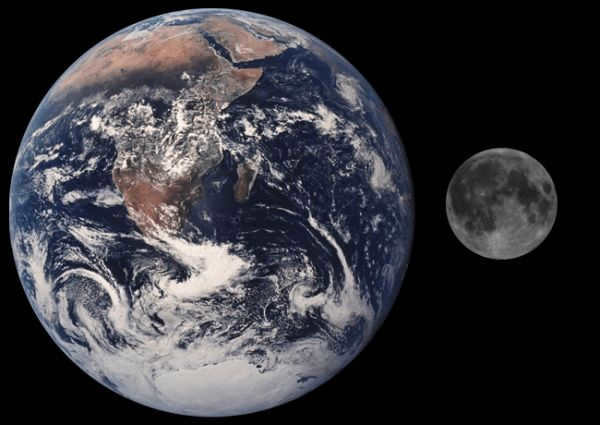
What is the size of the Moon? The Moon is Earth’s satellite, and this article provides a description of its mass, density, gravity, real and apparent size, super moon, moon illusion, and a comparison with Earth through photos.
As the brightest object in the sky (aside from the Sun), the Moon appears gigantic to an observer on Earth. However, this perception is only due to its proximity compared to other objects. In terms of size, it occupies 27% of Earth’s total area (a 1:4 ratio). When compared to other satellites, our Moon ranks fifth in size.
The average radius of the Moon is 1737.5 kilometers, resulting in a diameter of 3475 km. The equatorial circumference measures 10917 km.
The Moon’s surface area is approximately 38 million square kilometers, which is less than the total area of any continent.
Mass, density, and gravity
- The mass of the moon is 7.35 x 10^22 kg (which is 1.2% of the mass of the Earth). In other words, the Earth is 81 times more massive than the moon.
- The density of the moon is 3.34 g/cm^3 (which is 60% of the Earth’s density). However, Saturn’s moon Io has a higher density of 3.53 g/cm^3, making it denser than the moon.
- The gravitational force on the moon is only 17% of the Earth’s gravity, so if you weigh 100 kg on Earth, you would only weigh 7.6 kg on the moon. This is the reason why astronauts can jump so high on the lunar surface.
The Moon orbits the Earth in an elliptical path rather than a perfect circle, which means that at certain times it is much closer to us. This closest point is known as perigee. When perigee coincides with a full moon, we experience what is known as a super moon, which appears 14% larger and 30% brighter than a regular moon. This phenomenon occurs approximately every 414 days.
The Illusion of the Horizon
There is a visual effect called the moon illusion or Ponzo illusion that makes the Moon appear even larger when it rises behind distant objects on the horizon. Although this optical trick has been observed for centuries, scientists have yet to provide a definitive explanation for it. In the accompanying photo, you can compare the sizes of the Moon and Earth, as well as the Sun and Jupiter.
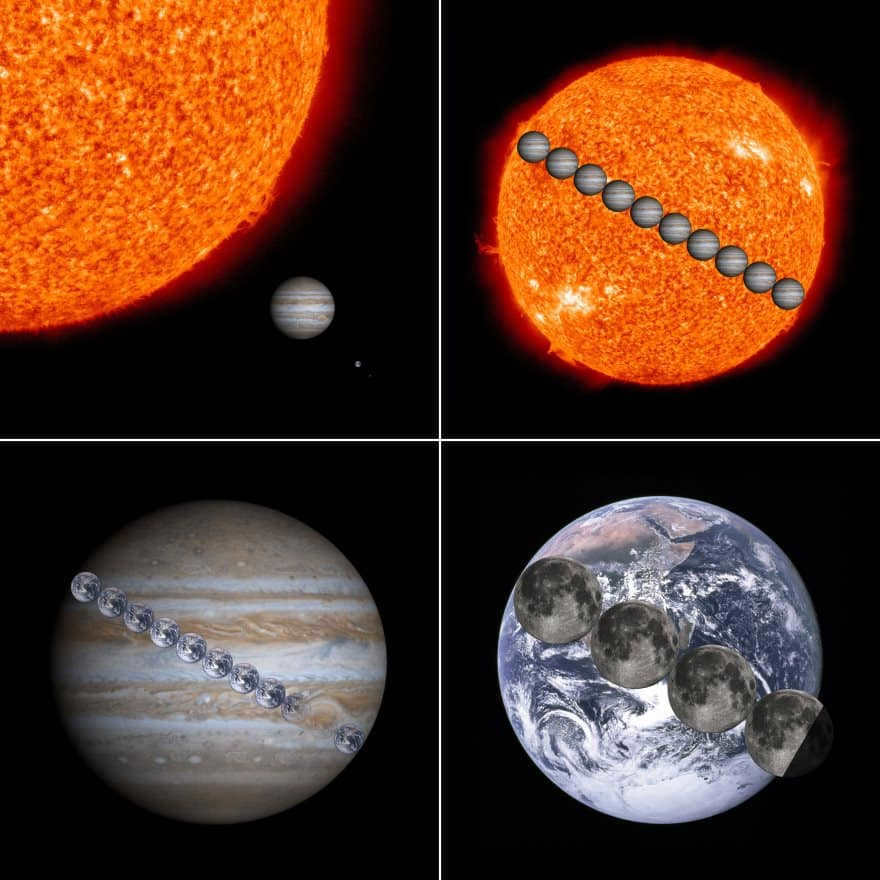
Comparison of the sizes of the Sun, Jupiter, Earth and the Moon
According to a certain theory, our perception of size is influenced by our experience of seeing clouds at a high altitude and realizing that they are actually miles away from us on the horizon. When the clouds on the horizon appear to be the same size as those overhead, our brain interprets them as being massive, despite the distance. Similarly, when we see the moon on the horizon, it appears larger because it is not being compared to trees and other objects on Earth.
However, not everyone agrees with this explanation, and there is another hypothesis. This hypothesis suggests that the moon appears larger near the horizon because our brain automatically tries to zoom in on it, as it appears to be the same size as the moon overhead.
To test the Moon illusion, it is necessary to place our thumb on the satellite and compare the size. Once it returns to its original position, repeat this process again. The size will remain the same as before. Now you have an understanding of the Moon’s dimensions.
What are the measurements of the Moon? Radius, area, mass, and volume
Despite appearing much brighter than any planet or star (except for the Sun) in the Earth’s sky, the Moon is actually a relatively small celestial body.
When you know the radius, it becomes simple to calculate the Moon’s area and volume. The lunar surface covers an area of 37.9 million square kilometers, which is approximately twice the size of Russia but 13 times smaller than the Earth’s total area of about 510 million square kilometers.
The Moon’s volume is estimated to be 21.9 billion cubic kilometers, which is just 2% of the Earth’s volume. Due to the Moon’s lower density compared to Earth, the difference in mass between the two bodies is even more significant. The Moon’s mass is 7.35-10 22 kg, making it 81 times lighter than the Earth.
Despite its smaller size compared to Earth, the Moon is still regarded as a remarkably large satellite. In fact, the disparity in size between a planet and its satellite is even more pronounced. For instance, Jupiter’s radius surpasses that of Ganymede, its largest satellite, by 26 times. When evaluating satellites based on their relative size to their respective planets, the Moon emerges as the frontrunner (with a substantial margin) among all the planetary satellites within the Solar System, as its radius accounts for 27% of Earth’s. However, it is worth noting that Pluto, which is no longer classified as a planet since 2006, has a satellite named Charon, whose radius exceeds 50% of Pluto’s radius.
Due to its low mass, the Moon lacks an atmosphere, making life impossible on its surface. However, if the satellite had a higher mass, it would have posed greater challenges for human exploration. The stronger gravity would have required more powerful engines for astronauts to leave the Moon and return to Earth.
Sources:
How large is the moon? Let’s attempt to envision…
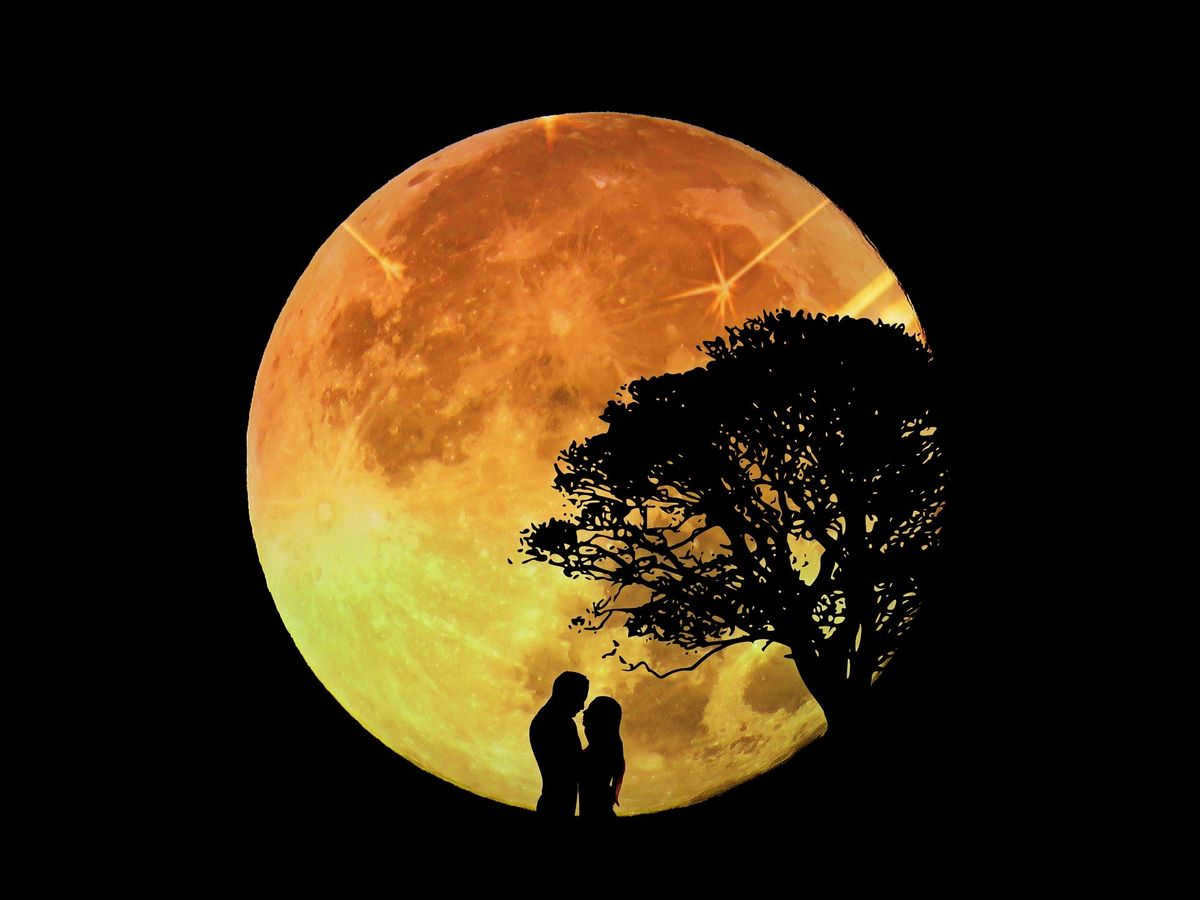
While it is possible to see the Moon in the night sky (and occasionally during the day), it is challenging to accurately comprehend its size and distance from Earth.
What is the Moon’s actual size? The answer to this inquiry is not as straightforward as it initially appears. Similar to Earth, the Moon is not perfectly spherical and instead has a somewhat flattened shape (resembling a flattened sphere). Consequently, the Moon’s diameter is smaller from its poles than at its equator.
However, the discrepancy between these measurements is minimal, at only four kilometers. The Moon’s equatorial diameter is approximately 3476km, while its polar diameter is 3472km. To put this into perspective, we can compare it to an area of similar size, like Australia.
From Coast to Coast
The direct distance between the two furthest cities in Australia, Perth and Brisbane, is 3606 kilometers. This is roughly the length of Australia. So, if we were to place Australia and the Moon side by side, with the Moon’s diameter stretched, their lengths would be approximately equal.
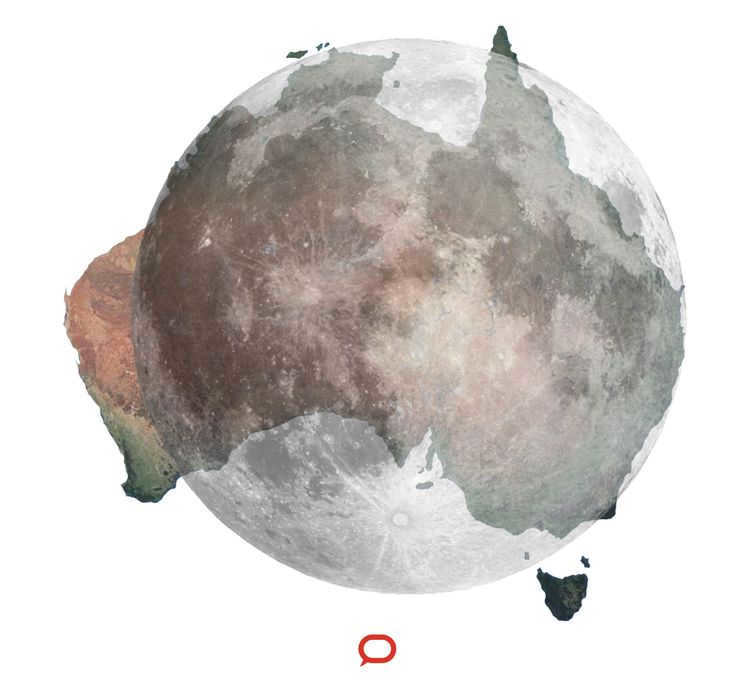
However, it is important to consider a more balanced perspective. While it may be tempting to perceive the Moon as having the same size as Australia, in reality, it is significantly larger. Australia spans approximately 7.69 million square kilometers, whereas the Moon occupies a vast area of 37.94 million square kilometers, making it nearly five times the size of Australia.
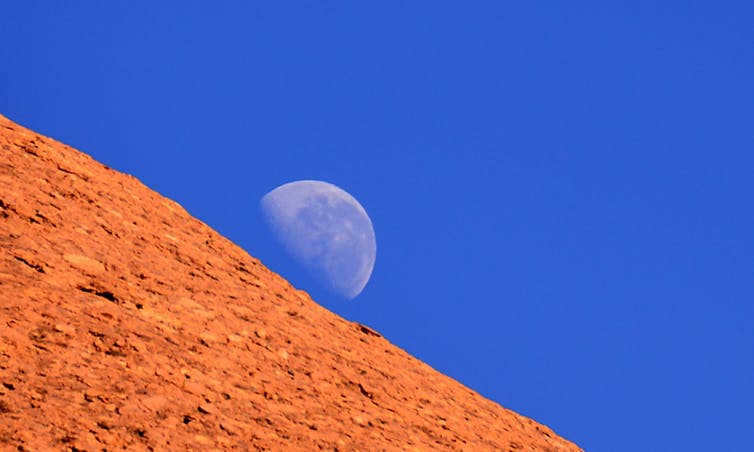
What is the distance to the Moon?
The question of how far away the Moon is can be more complex than we might think. The Moon orbits the Earth in an elliptical path, meaning its distance from our planet is constantly changing, with variations of up to 50,000 km. This is why the apparent size of the Moon in our sky is always changing. Additionally, the Moon’s orbit is influenced by other objects in the solar system. Furthermore, the Moon is gradually moving away from the Earth due to tidal forces.
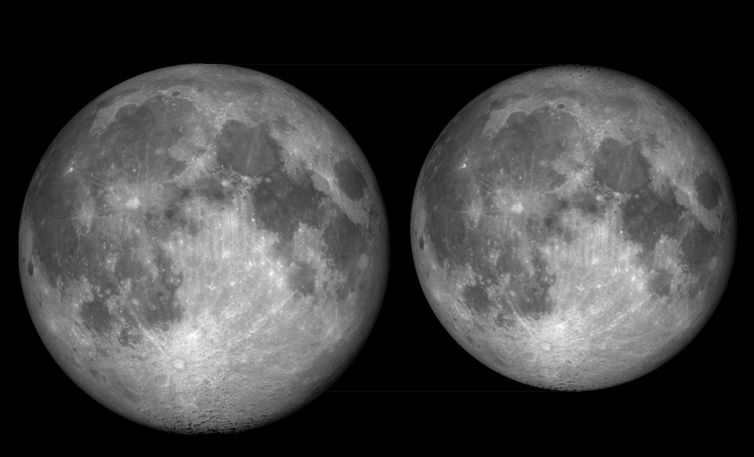
The Apollo missions provided us with an opportunity to conduct a more thorough investigation into the aforementioned information. In 1969, American astronauts made a visit to the Moon and placed a series of mirror reflectors on its surface. These reflectors, which operate without the need for any external power source, are still functional to this day. The reflector system has been designed in such a way that when a laser beam is emitted from Earth, it is reflected back towards its point of origin.
By carefully calculating the amount of time it takes for the laser beam to travel to the Moon and return, scientists have been able to obtain highly precise measurements of the distance between the Moon and Earth. This has allowed them to closely monitor the Moon’s gradual movement away from our planet. The findings indicate that the Moon is steadily drifting further away from Earth at a rate of 38 mm per year, which equates to approximately 4 meters per century.
The average distance between the Moon and Earth is 384402 kilometers. Let’s attempt to illustrate this measurement in relation to Earth’s distances.
If we were to travel by car from Brisbane to Perth, we would need to cover a distance of 4310 km, which would take approximately 46 hours. To cover a distance equivalent to the space between the Earth and the Moon, this journey would need to be completed over 89 times. It would require five and a half months of nonstop driving, without factoring in traffic congestion or potential accidents.
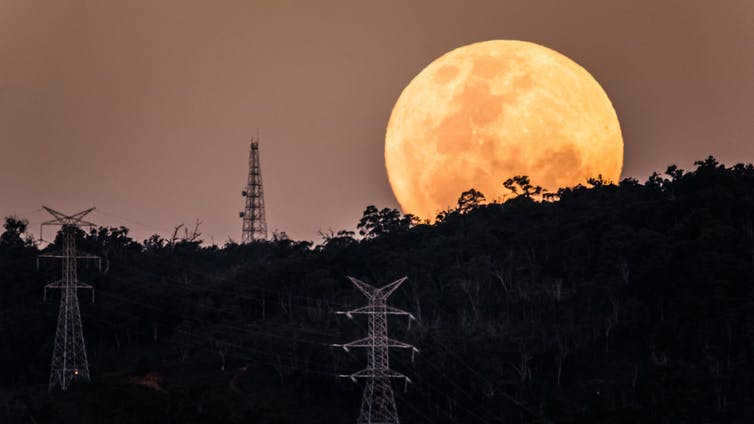
Fortunately, the Apollo 11 astronauts were not limited by the speed limits in Australia, and in 1969, the Columbia command module reached lunar orbit in a mere three days and four hours.
Solar eclipse
The Sun has an equatorial diameter of nearly 1.4 million kilometers, which is approximately 400 times the diameter of the Moon. Interestingly, the distance between the Earth and the Sun, which is equal to 149.6 million kilometers, is about 400 times the distance between the Earth and the Moon.
That is why, from our perspective on Earth, the Moon and the Sun appear to be the same size. Consequently, when the Moon and the Sun align perfectly (as seen from Earth), we have the opportunity to witness a remarkable event – a total solar eclipse.
Regrettably, researchers have determined that solar eclipses on our planet will eventually come to an end. As a result of its increasing distance, the Moon will eventually be too far away to cast a shadow on the Sun. The majority of scientists concur that this event will occur approximately 600 million years from now.
Moon exploration vehicles
Despite the progress made in the field of space exploration, the Moon remains the only astronomical object that humans have set foot on, and this historic event took place fifty years ago. Today, out of the twelve individuals who had the privilege of visiting Earth’s satellite, only four are still living.
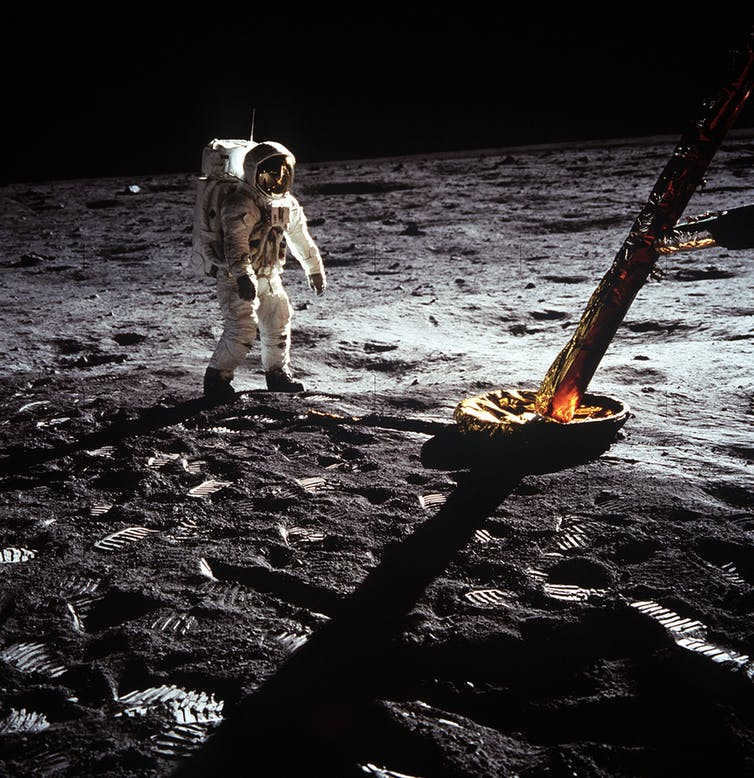
It is hoped that, in the years to come, mankind will have the opportunity to revisit the Moon and stimulate a fresh wave of curiosity among future generations, encouraging them to further investigate our closest celestial companion.
Our Planet © 2023
The content provided on this website is intended solely for informational purposes.
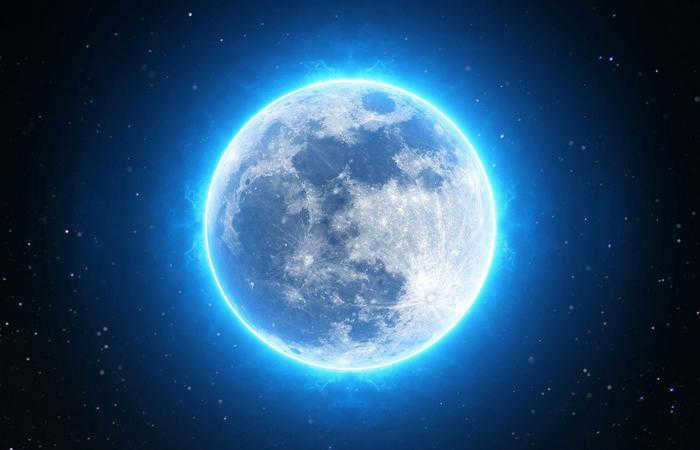
The Moon is a celestial body that revolves around planet Earth in the vastness of outer space. It is a natural satellite and the nearest one to the Sun compared to other planetary satellites.
Exploring the Moon. Understanding its Astronomical Characteristics and Movement:
Our Moon is the only natural satellite of our planet. It holds the distinction of being the closest planetary satellite to the Sun, as the planets in closer proximity to the Sun, such as Mercury and Venus, lack such satellites.
The full Moon has an apparent sidereal magnitude of -12.71m when observed from Earth’s sky. The Moon is the second brightest object in our planet’s sky, surpassed only by the Sun.
The distance between the Earth and the Moon can range from 363,104 kilometers to 405,696 kilometers. On average, the centers of the Earth and the Moon are approximately 384,467 km apart (equivalent to 0.00257 astronomical units or about 30 Earth diameters). The Moon follows an elliptical path as it orbits the Earth, with an eccentricity of 0.0549. This eccentricity results in the apparent size of the Moon appearing to change constantly, ranging from 29 to 32 angular minutes. The Moon completes one orbit around the Earth in 27 days, 7 hours, 43 minutes, and 11.5 seconds. During perigee, the Moon is closest to the Earth, at a distance of 356,400 to 370,400 kilometers. At apogee, the Moon is farthest from the Earth, ranging from 404,000 to 406,700 kilometers away. The inclination of the Moon’s orbit in relation to the ecliptic plane is 5.145 degrees. The average speed of the Moon along its orbit is 1.023 km/s.
The shape of the Moon is nearly spherical, with an average radius of 1,737.5 kilometers. The center of the Moon is shifted about 2 kilometers towards the Earth compared to its center of mass. The lunar surface covers an area of about 38 million square kilometers, which is only 0.074 of the Earth’s surface area. The volume of the Moon is approximately 22 billion cubic kilometers, which is 0.02 of the Earth’s volume.
The Moon’s mass is about 1/81.3 of the Earth’s mass. If we assume the mass of the Earth to be 5.977 x 10^24 kilograms, then the mass of the Moon is 7.35 x 10^22 kilograms. Using these measurements, we can calculate that the average density of the Moon is 3.34 grams per cubic centimeter, which is significantly lower than the average density of the Earth (5.52 grams per cubic centimeter).
The acceleration due to gravity on the Moon is 1.62 m/s², while on Earth it is 9.81 m/s². This means that the force of gravity on the Moon is six times weaker than on Earth, resulting in a person on the Moon feeling a decrease in their body weight. The escape velocity on the Moon is 2.38 km/s, whereas on Earth it is 11.186 km/s.
Due to a phenomenon called synchronous rotation (tidal lock), most of the Moon always faces the Earth. This occurs when the Moon’s rotational period matches its orbital period around the Earth. As a result, the same side of the Moon always faces the Earth because it completes one rotation on its axis in the same amount of time it takes to orbit around the Earth.
The movement of the moon around Earth can be described as a combination of multiple motions:
– The moon circulates around Earth in an elliptical orbit, taking approximately 27.32166 days to complete one revolution. This is known as the sidereal month, measured relative to the stars.
– The plane of the lunar orbit also undergoes rotation, with its nodes (the points where the orbit intersects the ecliptic) shifting westward. This rotation completes a full revolution every 18.6 years and is considered precessional.
– The major axis of the lunar orbit, known as the apsidal line, also rotates. This rotation occurs in the opposite direction to the movement of the nodes, resulting in an increase in the longitude of the perigee. The apsidal line takes approximately 8.8 years to complete one revolution.
– Additionally, the inclination of the lunar orbit with respect to the ecliptic undergoes periodic changes, ranging from 4°59′ to 5°19′.
– The size of the lunar orbit undergoes periodic changes: perigee ranges from 356.41 to 369.96 thousand km, while apogee ranges from 404.18 to 406.74 thousand km;
– The Moon gradually moves away from the Earth at a rate of 38 mm per year due to tidal acceleration, resulting in its orbit forming a slowly unwinding spiral.
Our nearest celestial neighbor, the Moon, is the only astronomical object beyond Earth that has been explored by humans.
The Moon does not possess a magnetic field.
Characteristics of the Moon’s physical appearance:
| Moon | Earth | Ratio (Moon/Earth) | |
| Mass (10 24 kg) | 0.07346 | 5.9724 | 0.0123 |
| Volume (10 10 km 3 ) | 2.1968 | 108.321 | 0.0203 |
| Equatorial radius (km) | 1738.1 | 6378.1 | 0.2725 |
| Polar radius (km) | 1736.0 | 6356.8 | 0.2731 |
| Volumetric mean radius (km) | 1737.4 | 6371.0 | 0.2727 |
| Ellipticity | 0.0012 | 0.00335 | 0.36 |
| Average density (kg /m 3 ) | 3344 | 5514 | 0.606 |
| Surface gravity (m /s 2 ) | 1.62 | 9.80 | 0.165 |
| Surface acceleration (m /s 2 ) | 1.62 | 9.78 | 0.166 |
| Escape velocity (km /s) | 2.38 | 11.2 | 0.213 |
| GM (x 10 6 km 3 /s 2 ) | 0.00490 | 0.39860 | 0.0123 |
| Bond’s albedo | 0.11 | 0.306 | 0.360 |
| Geometric albedo | 0.12 | 0.434 | 0.28 |
| V-band value V (1.0) | -0.08 | -3.99 | – |
| Solar irradiance (W/m 2 ) | 1361.0 | +1.000 | |
| Blackbody temperature (K) | 270.4 | 254.0 | 1.065 |
| Topographic range (km) | 13 | 20 | 0.650 |
| Moment of inertia (I / MR 2 ) | 0.394 | 0.3308 | 1.191 |
| J2 (х 10 -6 ) | 202.7 | 1082.63 | 0.187 |
Stages of the Lunar Cycle:
The Lunar Cycle The moon does not emit its own light, but rather reflects sunlight. Only the portion of the moon’s surface that is illuminated by the sun is visible from Earth.
Stages of the Lunar Cycle – The periodic transformation in the appearance of the sunlit portion of the moon in the Earth’s atmosphere. The length of time it takes for the complete transformation of the lunar cycle (known as the synodic month) varies due to the elliptical shape of the moon’s orbit, ranging from 29.25 to 29.83 Earth solar days. The average synodic month lasts approximately 29.5305882 days (29 days, 12 hours, 44 minutes, and 2.82 seconds).
When the moon is illuminated from the side, it takes on a “sickle” shape because it is a spherical body. The side of the Moon that we can see is illuminated by the Sun in different ways, depending on where the Moon is in its orbit. The illuminated side of the Moon always faces the Sun, even if the Sun is below the horizon. This means that the amount of the Moon’s surface that is illuminated can range from 0% (during a new moon) to 100% (during a full moon). During the phases of the Moon that are close to the new moon, such as the beginning of the first quarter and the end of the last quarter, you can see a very thin sickle shape. At these times, you can also observe the “ashen light of the Moon,” which is a faint illumination caused by sunlight reflecting off the Earth’s surface onto the Moon.
When the Moon and the Sun are closest to each other, it marks the beginning of the Moon’s phase cycle known as the New Moon phase.
The Moon goes through various phases of illumination:
1. new moon – when the Moon is not visible;
2. young Moon – the first sighting of the Moon in the sky after the new moon, appearing as a thin crescent;
3. first quarter – when half of the Moon is illuminated;
5. full moon – when the entire Moon is illuminated;
7. last quarter – when half of the Moon is illuminated once again;
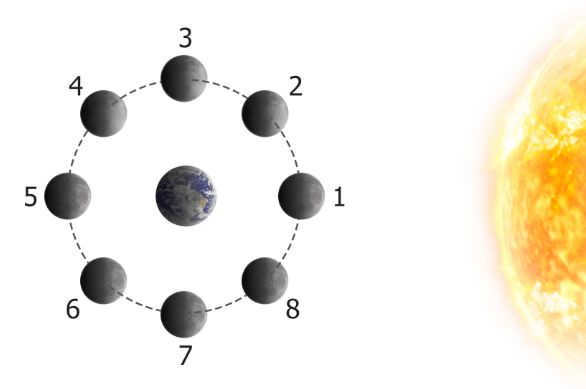
Fig. 1. Phases of the Moon. Movement of the Moon
Typically, there is a single full moon in each calendar month. However, due to the slightly faster pace at which the phases of the Moon change, there are occasions when there are two full moons in a month, known as blue moons.
Lunar and solar eclipses and their astronomical conditions:
A lunar eclipse occurs when the Moon enters the cone of shadow cast by the Earth. At a distance of 363,000 km (the Moon’s minimum distance from Earth), the diameter of the Earth’s shadow spot is approximately 2.5 Moon diameters, which means that the Moon can be completely obscured.
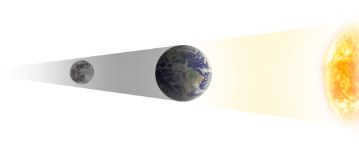
A lunar eclipse happens when the Moon moves in between the observer and the Sun, causing it to be obscured. As the Moon is facing us with its unilluminated side prior to an eclipse, a new moon always precedes an eclipse, resulting in the Moon being invisible.
Decades of observation and documentation of eclipses have demonstrated that lunar and solar eclipses follow a cycle that lasts for 6585.3 days, or 18 years, 11 days, and just under 8 hours. This cycle is known as saros. Within one saros, there are approximately 28-29 lunar eclipses and 41-43 solar eclipses.
Moon Facts:
– The moon is the sole extraterrestrial celestial object that has been visited by humans.
– The Moon Agreement of 1979 delineates the legal status of the Moon, asserting the principle of using the Moon and other celestial bodies solely for peaceful purposes, recognizing the equal rights of all nations to explore celestial bodies, and prohibiting any state from claiming sovereignty over any celestial body.
– The Moon appears almost motionless in the sky of the Earth.
– The gravitational pull of the Moon causes ocean tides on the Earth. The highest tidal wave amplitude on Earth is observed in the Bay of Fundy in Canada, reaching 18 meters.
– Galileo Galilei discovered the phenomenon of libration in 1635, which enables us to observe approximately 59% of the lunar surface.
– Unlike Earth, the Moon does not possess a global magnetic field, but it does have magnetized rocks on its surface that form small localized protective shields.
– A Super Moon is an astronomical event where the Moon reaches its closest point to Earth (perigee) at the same time as its full phase.
The Moon’s atmosphere and temperature:
The Moon lacks a substantial atmosphere. The atmosphere of the Moon is an extremely thin gas envelope, approximately ten trillion times less dense (surface pressure of about 10 nPa) than Earth’s atmosphere. It primarily consists of hydrogen, helium, neon, and argon.
The Moon’s atmosphere originates from both internal processes, such as the release of gases from its crust and volcanic activity, and external sources, including micrometeorite impacts and the solar wind. However, due to its weak gravity, the Moon is unable to retain most of the gases released on its surface, causing them to disperse into space.
On the Moon, the temperature difference between night and sunrise is significant due to the rarefaction of the atmosphere. At night, the temperature can drop as low as -173 °C, while at the sunrise point it can reach up to +127 °C, depending on the level of illumination. However, the temperature of rocks located 1 meter below the surface remains constant at -35 °C.
The structure and characteristics of the Moon. The composition of the Moon’s surface:
The Moon is composed of different layers, including the crust, upper mantle, middle mantle, lower mantle, and core. The thickness of the Moon’s crust can vary, ranging from 0 kilometers beneath the lunar Crisis Sea to 107 kilometers in the northern part of Korolev Crater on the far side. The lunar mantle is divided into several layers, such as the upper mantle (approximately 200 – 300 kilometers thick), the middle mantle (approximately 500 – 600 kilometers thick), and the lower mantle (approximately 800 – 900 kilometers thick). The inner core of the Moon has a radius of about 240 kilometers, while the outer core, which is liquid, has a radius of approximately 300 – 400 kilometers.
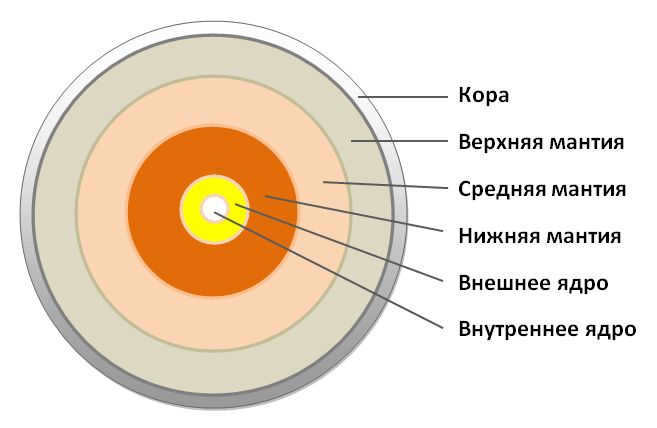
The Moon’s surface is covered in regolith, a combination of fine dust and rocks that form from meteorite impacts. These impacts cause the ground to loosen and mix, while also sintering and compacting the soil particles.
The regolith on the Moon contains a significant amount of oxygen, which is found in oxides. The most common oxide is silicon dioxide, making up 42.8% of the regolith.
Here is the chemical composition of the lunar regolith, given in percentages:
| Elements | Delivered by Luna-20 | Delivered by Luna-16 |
| Si | 20 | 20 |
| Ti | 0.28 | 1.9 |
| Al | 12.5 | 8.7 |
| Cr | 0.11 | 0.2 |
| Fe | 5.1 | 13.7 |
| Mg | 5.7 | 5.3 |
| Ca | 10.3 | 9.2 |
| Na | 0.26 | 0.32 |
| K | 0.05 | 0.12 |
The Moon’s surface can be categorized into two distinct types:
– Ancient mountainous regions (lunar continents);
– Comparatively smooth and younger lunar seas.
The lunar “seas,” which account for approximately 16% of the Moon’s overall surface, are large craters formed through collisions with celestial bodies that were subsequently filled with liquid lava. Due to the gravitational forces at play during the Moon’s formation, these “seas” are primarily concentrated on the side facing Earth, where lunar probes have discovered denser, heavier rocks.
Most of the craters on the Earth-facing side of the Moon are named after renowned figures in the field of science, such as Tycho Brahe, Copernicus, and Ptolemy. Conversely, the terrain features on the far side are assigned more contemporary names like Apollo, Gagarin, and Korolev.
There exists a massive depression on the far side of the Moon known as the South Pole-Eitken Basin. This basin, measuring 2250 km in diameter and 12 km deep, holds the distinction of being the largest basin in the entire solar system, resulting from a powerful collision. On the visible side of the Moon, the western portion features the East Sea, which serves as a remarkable example of a multi-ring crater that can be observed from Earth.
Furthermore, it is important to note the intricate details of the lunar topography, including domes, ridges, and furrows. These narrow, sinuous valley-like depressions add depth to the relief of the Moon.
Surprisingly, water has been discovered on the Moon. The North Pole region alone contains at least 600 million tons of water, mostly in the form of ice blocks that rest at the bottoms of lunar craters. In fact, over 40 craters ranging from 2 to 15 kilometers in diameter have been found to contain water.
The Moon experiences seismic surface vibrations referred to as Moonquakes, which can be classified into four distinct groups.
– Tidal phenomena, which occur twice a month, are a result of the gravitational forces of both the Sun and the Earth;
– Tectonic activities on the Moon’s surface are irregular and caused by movements within its crust;
– Meteoric events on the Moon are a result of falling meteorites;
– Thermal phenomena on the Moon are caused by rapid heating of its surface as the Sun rises.
The Moon is a natural satellite of the Earth and is considered to be the closest celestial body to our planet. Scientists estimate that the distance between the Earth and the Moon is approximately 384 thousand kilometers.
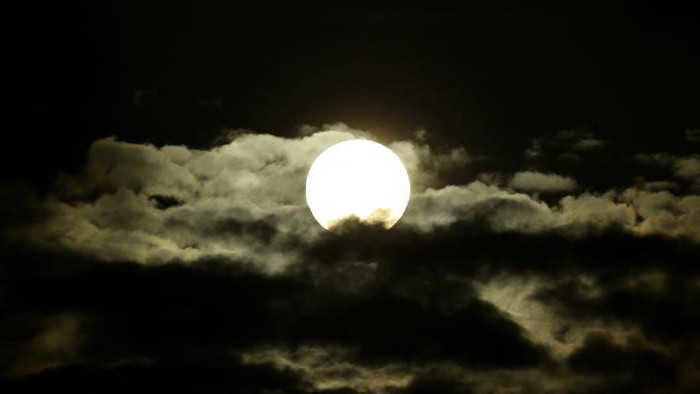
What should I know about Earth’s satellite?
To gain a general understanding of this celestial object, it is important to take into account several of its characteristics: the satellite’s volume, diameter, surface area, and mass.
The Moon follows an elliptical orbit and has an approximate speed of 1.02 km/sec. When observed from the Earth’s North Pole, it can be seen moving in the same direction as most other visible celestial bodies, which is counterclockwise. The gravitational force on the Moon measures 1.622 m/s².
For a long time, scientists and astronomers have had a keen interest in various indicators related to the Moon, such as its distance from Earth, its impact on climate, and its mass, among other characteristics. In fact, the study of celestial bodies has been an ongoing process for centuries.
Ancient Studies of the Moon
The Moon, being a highly visible celestial object, naturally drew the attention of ancient scientists. Thousands of years ago, astronomers were intrigued by questions regarding the Moon’s mass and the changes in its phases.
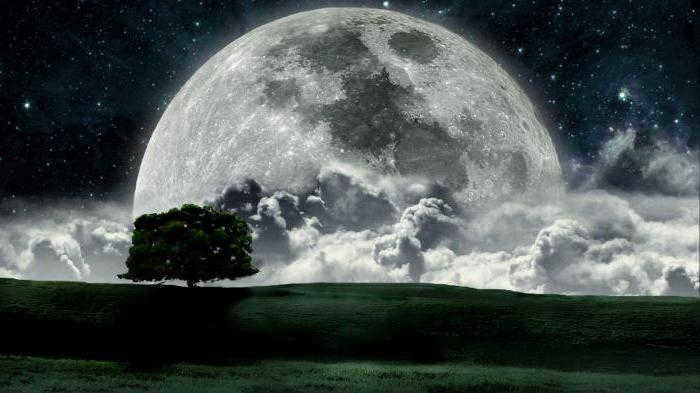
Newest scientific investigations
The moon has been extensively studied by scientists all over the world. Over a hundred satellites have been launched by various countries to conduct research on this celestial body. The first ever research vehicle to reach the moon was the Soviet satellite Luna-1, which was launched in 1959. This groundbreaking event paved the way for further exploration, as the research complex was able to successfully land on the lunar surface, collect soil samples, transmit images back to Earth, and make approximate calculations regarding the moon’s mass. In addition to this remarkable achievement, the Soviet Union also successfully deployed two lunar rovers on the moon’s surface. One of these rovers operated for an impressive duration of nearly 10 months, covering a distance of 10 km, while the second rover operated for 4 months and traveled an impressive 37 km.
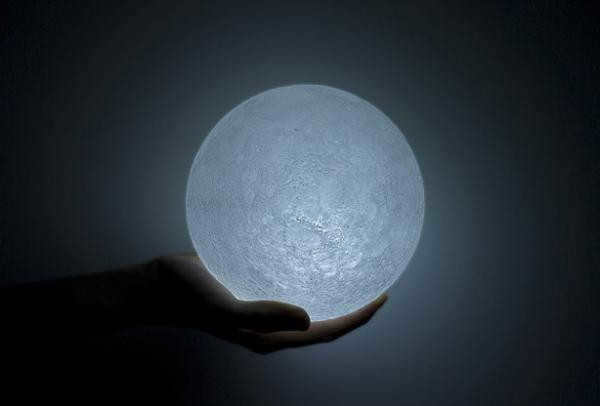
The primary measurements of the Moon
The Moon has a diameter of 3474 km, while the Earth has a diameter of 12742 km. In simple terms, the circumference of the Moon is only 3/11th of the Earth’s diameter.
The surface area of the Moon is 37.9 million square kilometers. In comparison to the Earth’s surface area of 510 million square kilometers, the Moon’s surface is significantly smaller. Even if we only compare the lunar surface to the Earth’s continents, we find that the Moon’s area is 4 times smaller. Additionally, the volume of the Earth is 50 times greater than the volume of the Moon.
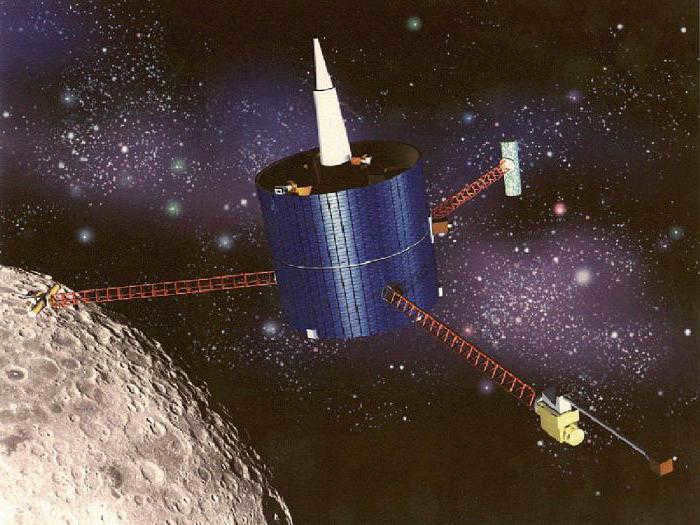
Additional information about the Moon’s mass
The mass of the Moon has been accurately determined through the use of artificial satellites. It is approximately 7.35*10^22 kilograms. To put this into perspective, the Earth’s mass is approximately 5.9742 × 10^24 kilograms.
The masses of the Moon and Earth are constantly undergoing slight changes. For instance, the Earth is subject to a small amount of meteorite bombardment. On a daily basis, around 5-6 tons of meteorites fall on the Earth’s surface. However, the Earth loses more mass through the vaporization of helium and hydrogen from the atmosphere, which escapes into outer space. This loss amounts to approximately 200-300 tons per day. The Moon, on the other hand, does not experience such losses. The average density of matter on the Moon is roughly 3.34 grams per cubic centimeter.
The gravitational acceleration on the Earth’s satellite is 6 times higher compared to the Earth itself. The density of the rocks that make up the Moon is approximately 60 times lower than that of the Earth. As a result, the mass of the Moon is 81 times smaller than the mass of the Earth.
Due to its limited gravitational force, the Moon lacks an atmosphere and does not possess any gas envelope or free water. The duration of the Moon’s orbit around the Earth is known as the sideric, or sidereal period, which spans 27.32166 days. However, this value can experience slight variations over time.

